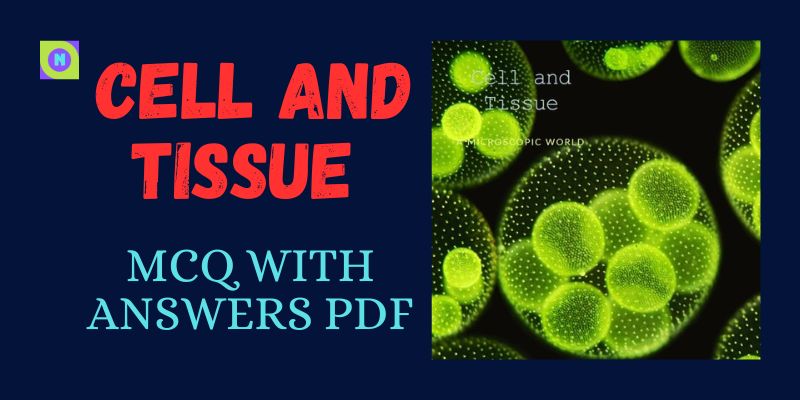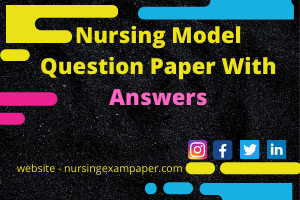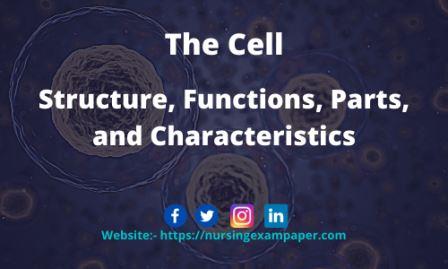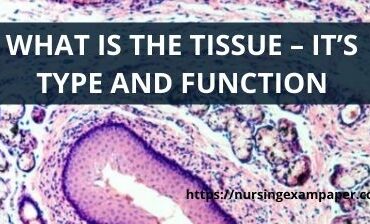Cell and Tissue MCQ with answers pdf
- Which organelle is responsible for energy production in the cell?
A) Golgi apparatus
B) Mitochondria
C) Endoplasmic reticulum
D) Nucleus
Answer: B – Mitochondria are known as the cell’s powerhouse because they produce ATP through cellular respiration.
- Which type of tissue lines the interior surfaces of organs and blood vessels?
A) Epithelial tissue
B) Connective tissue
C) Muscle tissue
D) Nervous tissue
Answer: A – Epithelial tissue forms the linings of organs and blood vessels, providing a barrier and facilitating absorption and secretion.
- Which cell structure regulates what enters and leaves the cell?
A) Nucleus
B) Cell membrane
C) Cytoplasm
D) Golgi apparatus
Answer: B – The cell membrane (plasma membrane) controls the movement of substances into and out of the cell.
- Which type of muscle tissue is striated and under voluntary control?
A) Skeletal muscle
B) Cardiac muscle
C) Smooth muscle
D) None of the above
Answer: A – Skeletal muscle is striated (has a striped appearance) and is voluntarily controlled.
- Which organelle is responsible for protein synthesis in the cell?
A) Golgi apparatus
B) Endoplasmic reticulum
C) Ribosome
D) Lysosome
Answer: C – Ribosomes are responsible for protein synthesis in the rough endoplasmic reticulum and free in the cytoplasm.
- What is the primary function of white blood cells in the body?
A) Transport of oxygen
B) Fight infections
C) Blood clotting
D) Produce antibodies
Answer: B – White blood cells (leukocytes) are key immune system components and help fight infections.
- Which type of epithelial tissue is best suited for areas subject to friction?
A) Simple squamous epithelium
B) Stratified squamous epithelium
C) Simple cuboidal epithelium
D) Transitional epithelium
Answer: B – Stratified squamous epithelium is found in areas subject to wear and tear and protects against friction.
- Which of the following cells are responsible for producing myelin in the central nervous system?
A) Astrocytes
B) Oligodendrocytes
C) Microglia
D) Ependymal cells
Answer: B – Oligodendrocytes are responsible for producing myelin, which insulates axons in the central nervous system. (Tissue MCQ with Answers pdf)
- Which connective tissue stores fat in the body?
A) Adipose tissue
B) Cartilage
C) Bone
D) Blood
Answer: A – Adipose tissue, also known as fat tissue, stores energy in the form of fat globules (triglycerides).
- Which type of cell is responsible for breaking down cellular waste and foreign substances in the body?
A) Neutrophils
B) Macrophages
C) Eosinophils
D) Basophils
Answer: B – Macrophages are specialized white blood cells that engulf and digest cellular debris, foreign substances, and pathogens.
- Which of the following is NOT a function of the smooth endoplasmic reticulum (SER)?
A) Lipid synthesis
B) Detoxification
C) Protein synthesis
D) Calcium ion storage
Answer: C – Smooth endoplasmic reticulum (SER) is primarily involved in lipid synthesis, detoxification, and calcium ion storage.
- Which type of tissue lines the respiratory tract and contains cilia to sweep away mucus and debris?
A) Simple squamous epithelium
B) Pseudostratified columnar epithelium
C) Simple cuboidal epithelium
D) Transitional epithelium
Answer: B – Pseudostratified columnar epithelium lines the respiratory tract and contains cilia that aid in removing mucus and debris.
- Which organelle is responsible for detoxifying harmful substances in the liver cells?
A) Lysosome
B) Peroxisome
C) Golgi apparatus
D) Smooth endoplasmic reticulum
Answer: B – Peroxisomes are membrane-bound organelles that detoxify harmful substances in the liver and other cells.
- Which type of muscle tissue is found in the walls of hollow organs like the stomach and blood vessels?
A) Skeletal muscle
B) Cardiac muscle
C) Smooth muscle
D) Striated muscle
Answer: C – Smooth muscle tissue is found in the walls of hollow organs and blood vessels, where it helps with involuntary movements.
- Which of the following is a function of osteoblasts in bone tissue?
A) Break down bone matrix
B) Secrete bone matrix
C) Contract to move bones
D) Phagocytize bone debris
Answer: B – Osteoblasts are bone-forming cells that secrete bone matrix and play a key role in bone development and repair.
connective tissue MCQ with answers pdf
- Which type of tissue connects muscle to bone?
A) Ligament
B) Tendon
C) Cartilage
D) Fascia
Answer: B – Tendons are dense connective tissues that connect muscle to bone, transmitting the force of muscle contraction to bone movement.
- Which type of cell produces antibodies in response to pathogens?
A) T lymphocyte
B) B lymphocyte
C) Natural killer cell
D) Monocyte
Answer: B – B lymphocytes (B cells) are responsible for producing antibodies in response to specific pathogens.
- Which of the following types of epithelial tissue is found in the kidney tubules and ducts of glands?
A) Simple squamous epithelium
B) Simple cuboidal epithelium
C) Stratified squamous epithelium
D) Transitional epithelium
Answer: B – Simple cuboidal epithelium is specialized for secretion and absorption, found in kidney tubules and glandular ducts.
- Which type of cell is responsible for storing iron in the liver and spleen?
A) Erythrocyte
B) Neutrophil
C) Kupffer cell
D) Hepatocyte
Answer: C – Kupffer cells are specialized macrophages in the liver that store iron and participate in immune responses.
- Which type of cartilage is found in the external ear and the epiglottis?
A) Hyaline cartilage
B) Fibrocartilage
C) Elastic cartilage
D) None of the above
Answer: C – Elastic cartilage is flexible and is found in structures that need to bend and stretch, like the external ear and epiglottis.
- Which of the following is NOT a function of the nucleus in a cell?
A) Control center of the cell
B) Contains genetic material
C) Site of protein synthesis
D) Regulates cell activities
Answer: C – Protein synthesis occurs at ribosomes, either free in the cytoplasm or attached to the rough endoplasmic reticulum.
- Which type of cell secretes insulin in the pancreas?
A) Alpha cell
B) Beta cell
C) Delta cell
D) F cell
Answer: B – Beta cells of the pancreas secrete insulin in response to elevated blood glucose levels.
- Which type of tissue forms tendons and ligaments?
A) Adipose tissue
B) Dense regular connective tissue
C) Areolar connective tissue
D) Reticular connective tissue
Answer: B – Dense regular connective tissue forms tendons (muscle to bone) and ligaments (bone to bone), providing strong support.
- Which type of muscle tissue is found in the walls of the heart?
A) Skeletal muscle
B) Cardiac muscle
C) Smooth muscle
D) Voluntary muscle
Answer: B – Cardiac muscle tissue is striated and found exclusively in the walls of the heart, responsible for involuntary contractions.
- Which of the following is a characteristic feature of connective tissue?
A) Excitability
B) Contractility
C) Support
D) Conductivity
Answer: C – Connective tissue supports and connects other tissues and organs of the body.
- Which type of tissue forms the framework of the spleen and lymph nodes?
A) Areolar connective tissue
B) Reticular connective tissue
C) Dense irregular connective tissue
D) Adipose tissue
Answer: B – Reticular connective tissue forms the stroma (framework) of soft organs like the spleen and lymph nodes.
- Which type of epithelial tissue lines the urinary bladder and allows for stretching?
A) Simple squamous epithelium
B) Pseudostratified columnar epithelium
C) Simple cuboidal epithelium
D) Transitional epithelium
Answer: D – Transitional epithelium lines organs like the urinary bladder and allows for stretching as the organ fills with urine.
- Which organelle modifies, sorts, and packages proteins for secretion from the cell?
A) Ribosome
B) Golgi apparatus
C) Endoplasmic reticulum
D) Lysosome
Answer: B – The Golgi apparatus processes and packages proteins and lipids synthesized by the cell for secretion or use within the cell.
- Which type of white blood cell releases histamine during allergic reactions?
A) Neutrophil
B) Basophil
C) Eosinophil
D) Monocyte
Answer: B – Basophils release histamine and other chemicals during allergic reactions and inflammation.
- Which type of tissue is specialized for rapid conduction of electrical impulses?
A) Nervous tissue
B) Muscle tissue
C) Epithelial tissue
D) Connective tissue
Answer: A – Nervous tissue consists of neurons and glial cells and is specialized for transmitting electrical signals throughout the body.
Human tissue MCQ with answers PDF for NEET
- Which type of cell produces myelin in the peripheral nervous system?
A) Oligodendrocyte
B) Schwann cell
C) Microglia
D) Astrocyte
Answer: B – Schwann cells produce myelin sheaths around axons in the peripheral nervous system, aiding in signal transmission.
- Which type of tissue covers the ends of bones in joints?
A) Hyaline cartilage
B) Elastic cartilage
C) Fibrocartilage
D) Areolar connective tissue
Answer: A – Hyaline cartilage covers the ends of bones in joints, reducing friction and allowing smooth movement.
- Which of the following is a function of melanocytes in the skin?
A) Produce sweat
B) Protect against UV radiation
C) Detect touch sensations
D) Store fat
Answer: B – Melanocytes produce melanin, a pigment that protects against UV radiation and gives skin its color. (Tissue MCQ with Answers pdf )
- Which type of muscle tissue is found in the walls of blood vessels?
A) Skeletal muscle
B) Cardiac muscle
C) Smooth muscle
D) Striated muscle
Answer: C – Smooth muscle tissue is found in the walls of blood vessels, where it regulates vessel diameter and blood flow.
- Which type of tissue lines the joint cavities and secretes synovial fluid?
A) Hyaline cartilage
B) Fibrocartilage
C) Synovial membrane
D) Ligament
Answer: C – The synovial membrane lines joint cavities and secretes synovial fluid, which lubricates and nourishes the joint.
- Which type of cell is responsible for forming scar tissue in the healing of wounds?
A) Macrophage
B) Fibroblast
C) Mast cell
D) Eosinophil
Answer: B – Fibroblasts produce collagen fibers and other components of connective tissue, forming scar tissue during wound healing.
- Which type of epithelial tissue is found in the walls of capillaries and air sacs of the lungs?
A) Simple squamous epithelium
B) Simple cuboidal epithelium
C) Stratified squamous epithelium
D) Pseudostratified columnar epithelium
Answer: A – Simple squamous epithelium is thin and allows for diffusion, found in areas where rapid exchange of substances occurs.
- Which type of cell produces and secretes mucus in the respiratory tract?
A) Ciliated cell
B) Goblet cell
C) Alveolar cell
D) Clara’s cell
Answer: B – Goblet cells are specialized epithelial cells that produce and secrete mucus in the respiratory tract.
- Which type of tissue makes up the majority of the dermis of the skin?
A) Areolar connective tissue
B) Reticular connective tissue
C) Dense irregular connective tissue
D) Adipose tissue
Answer: B – The dermis is primarily composed of dense irregular connective tissue, providing strength and elasticity to the skin.
- Which type of muscle tissue is multinucleated?
A) Skeletal muscle
B) Cardiac muscle
C) Smooth muscle
D) None of the above
Answer: A – Skeletal muscle cells are long and multinucleated, with nuclei located at the periphery of the cell. (Tissue MCQ with Answers pdf )
- Which of the following is NOT a characteristic of epithelial tissue?
A) Avascular
B) Highly cellular
C) Extracellular matrix
D) Regenerative
Answer: C – Epithelial tissue is avascular and lacks an extensive extracellular matrix compared to other tissue types.
- Which type of tissue is found in the spleen and lymph nodes and is involved in immune responses?
A) Areolar connective tissue
B) Reticular connective tissue
C) Dense irregular connective tissue
D) Adipose tissue
Answer: B – Reticular connective tissue forms the stroma (framework) of lymphoid organs and is involved in immune responses.
- Which type of tissue lines the inside of the small intestine and increases surface area for absorption?
A) Simple squamous epithelium
B) Simple cuboidal epithelium
C) Simple columnar epithelium
D) Stratified squamous epithelium
Answer: C – Simple columnar epithelium lines the small intestine and contains microvilli, increasing surface area for nutrient absorption.
- Which type of cell is responsible for the production of collagen fibers in connective tissue?
A) Fibroblast
B) Adipocyte
C) Chondrocyte
D) Osteocyte
Answer: A – Fibroblasts are active cells in connective tissue that produce collagen fibers, ground substance, and other matrix components.
- Which of the following cells are responsible for initiating the clotting process in blood vessels?
A) Erythrocyte
B) Platelet
C) Neutrophil
D) Lymphocyte
Answer: B – Platelets (thrombocytes) are cell fragments that initiate the clotting process to stop bleeding from damaged blood vessels.
Anatomy of tissue MCQ with answers pdf
- Which type of tissue forms the epidermis of the skin?
A) Simple squamous epithelium
B) Stratified squamous epithelium
C) Simple cuboidal epithelium
D) Transitional epithelium
Answer: B – Stratified squamous epithelium forms the outer layer (epidermis) of the skin, protecting against abrasion and pathogens.
- Which type of tissue stores calcium and phosphorus in the bones?
A) Adipose tissue
B) Cartilage
C) Bone tissue
D) Blood
Answer: C – Bone tissue (osseous tissue) stores minerals like calcium and phosphorus, providing structural support and protection. (Tissue MCQ with Answers pdf )
- Which of the following is not a primary tissue type in animals?
A) Epithelial tissue
B) Connective tissue
C) Muscular tissue
D) Ionic tissue
Answer: D) Ionic tissue – Ionic tissue is not a recognized primary tissue type. The correct primary tissue types in animals are epithelial, connective, muscular, and nervous tissues
- Which type of epithelial tissue is specialized for diffusion and filtration?
A) Simple squamous epithelium
B) Stratified squamous epithelium
C) Simple cuboidal epithelium
D) Transitional epithelium
Answer: A) Simple squamous epithelium – Simple squamous epithelium consists of a single layer of flattened cells and is ideal for diffusion and filtration due to its thin structure
- Which type of tissue is specialized for storing fat in the body?
A) Adipose tissue
B) Reticular connective tissue
C) Dense regular connective tissue
D) Areolar connective tissue
Answer: A – Adipose tissue stores energy in the form of fat globules (triglycerides) and provides insulation and cushioning.
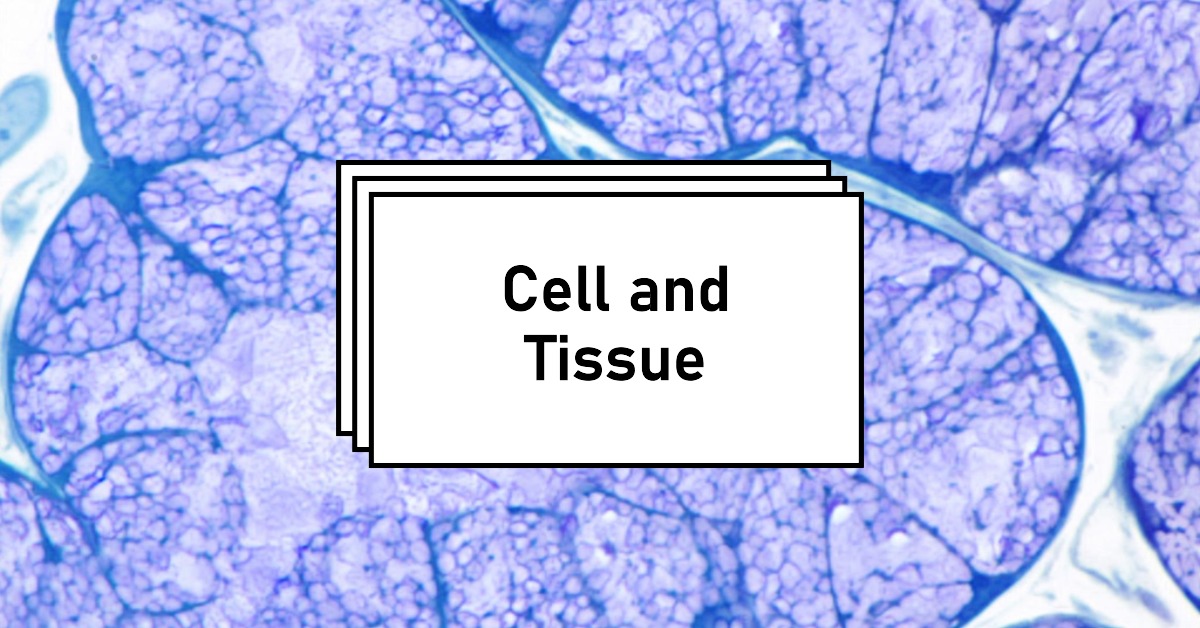
- Which type of epithelial tissue is found lining the stomach and intestines, facilitating absorption and secretion?
A) Simple squamous epithelium
B) Simple cuboidal epithelium
C) Simple columnar epithelium
D) Stratified squamous epithelium
Answer: C) Simple columnar epithelium – Simple columnar epithelium is tall and specialized for absorption and secretion, commonly found in the lining of the stomach and intestines where it increases surface area with microvilli.
- Which muscle tissue is striated and under voluntary control?
A) Smooth muscle tissue
B) Cardiac muscle tissue
C) Skeletal muscle tissue
D) Visceral muscle tissue
Answer: C) Skeletal muscle tissue – Skeletal muscle tissue is characterized by striations (stripes) and is consciously controlled, allowing for voluntary movement.
- Which of the following cells produce antibodies during an immune response?
A) T lymphocytes
B) B lymphocytes
C) Natural killer cells
D) Monocytes
Answer: B – B lymphocytes (B cells) are responsible for producing antibodies in response to specific pathogens.
- Which type of cell is responsible for producing myelin in the peripheral nervous system?
A) Oligodendrocyte
B) Schwann cell
C) Microglia
D) Astrocyte
Answer: B – Schwann cells produce myelin sheaths around axons in the peripheral nervous system, aiding in signal transmission.
- What is the primary function of fibrocartilage?
A) Providing flexible support
B) Withstanding compressive forces
C) Storing minerals
D) Facilitating smooth joint movement
Answer: B) Withstanding compressive forces – Fibrocartilage is a tough connective tissue that withstands compression and tensile forces, found in structures such as intervertebral discs and the knee joint meniscus.
- Which connective tissue type is found in the external ear and larynx, providing support with flexibility?
A) Elastic connective tissue
B) Reticular connective tissue
C) Areolar connective tissue
D) Dense irregular connective tissue
Answer: A) Elastic connective tissue – Elastic connective tissue contains elastic fibers that allow tissues to stretch and recoil, providing support with flexibility in structures like the external ear and larynx.
- Smooth muscle tissue is responsible for which function in the digestive system?
A) Mixing and propelling food
B) Digesting fats
C) Absorbing nutrients
D) Producing enzymes
Answer: A) Mixing and propelling food – Smooth muscle tissue in the digestive system contracts rhythmically to mix and propel food along the digestive tract, facilitating digestion and absorption.
- What is the function of pseudostratified epithelium with cilia in the respiratory tract?
A) Absorption of oxygen
B) Protection against pathogens
C) Movement of mucus
D) Secretion of hormones
Answer: C) Movement of mucus – Pseudostratified epithelium with cilia in the respiratory tract moves mucus produced by goblet cells upward toward the throat, clearing debris and pathogens from the airways. (Tissue MCQ with Answers pdf )
- Where would you find dense irregular connective tissue in the body?
A) Tendons
B) Dermis of the skin
C) Cartilage
D) Bone matrix
Answer: B) Dermis of the skin – Dense irregular connective tissue forms the dermis of the skin, providing strength and resilience to withstand tension in various directions.
- Smooth muscle tissue is found in which of the following organs?
A) Heart
B) Intestines
C) Skeletal muscles
D) Biceps
Answer: B) Intestines – Smooth muscle tissue is non-striated and involuntarily controlled, found in the walls of hollow organs like the intestines, bladder, and blood vessels, where it facilitates peristaltic movement and contraction.
Tissue MCQ with answers pdf
- What is the function of stratified squamous epithelium in the skin?
A) Absorption
B) Secretion
C) Protection against abrasion
D) Gas exchange
Answer: C) Protection against abrasion – Stratified squamous epithelium in the skin protects against mechanical abrasion, pathogens, and chemical stresses, serving as a barrier to external threats.
- Where would you find dense regular connective tissue in the body?
A) Dermis of the skin
B) Bone marrow
C) Heart walls
D) Tendons and ligaments
Answer: D) Tendons and ligaments – Dense regular connective tissue consists of collagen fibers arranged in parallel, providing high tensile strength and connecting muscles to bones (tendons) and bones to bones (ligaments).
- Which muscle tissue type is striated and under involuntary control?
A) Skeletal muscle tissue
B) Smooth muscle tissue
C) Cardiac muscle tissue
D) Visceral muscle tissue
Answer: C) Cardiac muscle tissue – Cardiac muscle tissue is striated like skeletal muscle but is under involuntary control, found exclusively in the heart, and responsible for pumping blood throughout the body.
- What is the main function of adipose tissue?
A) Storing energy
B) Contracting for movement
C) Producing antibodies
D) Transmitting nerve signals
Answer: A) Storing energy – Adipose tissue serves primarily as a storage site for triglycerides, providing insulation, cushioning, and energy reserves in the body.
- Which connective tissue type forms the framework of lymphoid organs like the spleen and lymph nodes?
A) Areolar connective tissue
B) Reticular connective tissue
C) Elastic connective tissue
D) Dense irregular connective tissue
Answer: B) Reticular connective tissue – Reticular connective tissue forms the stroma (supporting framework) of lymphoid organs, supporting immune cells and facilitating the filtration of lymph.
- What is the main function of pseudostratified columnar epithelium in the respiratory tract?
A) Absorption
B) Secretion of mucus
C) Protection against pathogens
D) Regulation of gas exchange
Answer: B) Secretion of mucus – Pseudostratified columnar epithelium in the respiratory tract secretes mucus and moves it along with cilia to trap and remove dust particles and pathogens, contributing to respiratory health.
- Which type of connective tissue is characterized by a fluid matrix called plasma?
A) Bone tissue
B) Adipose tissue
C) Blood tissue
D) Cartilage tissue
Answer: C) Blood tissue – Blood tissue consists of a fluid matrix called plasma, in which various cells (red blood cells, white blood cells, and platelets) are suspended, responsible for the transportation of substances, immunity, and clotting.
- Cardiac muscle tissue is striated?
A) Voluntarily controlled
B) Involuntarily controlled
C) Found in tendons
D) Multinucleated
Answer: B – Involuntarily controlled – Cardiac muscle tissue is striated like skeletal muscle but is involuntarily controlled, contracting rhythmically to pump blood throughout the body.
- Which type of epithelial tissue is found in the lining of the kidney tubules and ducts of glands?
A) Simple squamous epithelium
B) Simple cuboidal epithelium
C) Stratified squamous epithelium
D) Stratified columnar epithelium
Answer: B) Simple cuboidal epithelium – Simple cuboidal epithelium is specialized for secretion and absorption, found in kidney tubules and glands where it facilitates these functions.
- What is the primary function of elastic cartilage?
A) Providing support and protection
B) Withstanding compressive forces
C) Providing flexibility and maintaining shape
D) Storing minerals
Answer: C) Providing flexibility and maintaining shape – Elastic cartilage contains abundant elastic fibers, providing resilience and flexibility to structures such as the external ear and epiglottis while maintaining their shape.
- Where would you find dense irregular connective tissue in the body?
A) Tendons and ligaments
B) Dermis of the skin
C) Bone matrix
D) Cartilage
Answer: B) Dermis of the skin – Dense irregular connective tissue forms the dermis of the skin, providing strength and resilience to withstand tension in various directions. (Tissue MCQ with Answers pdf )
- Which muscle tissue type is found in the heart?
A) Skeletal muscle tissue
B) Smooth muscle tissue
C) Cardiac muscle tissue
D) Striated muscle tissue
Answer: C) Cardiac muscle tissue – Cardiac muscle tissue is striated like skeletal muscle but is involuntarily controlled and found exclusively in the heart, where it contracts to pump blood.
- What is the primary function of areolar connective tissue?
A) Providing structural support
B) Storing energy
C) Transmitting electrical signals
D) Forming tendons and ligaments
Answer: A) Providing structural support – Areolar connective tissue is a loose connective tissue that provides support and elasticity to organs and tissues, allowing them to move and return to their original shape.
- Which type of epithelial tissue lines the inner surface of blood vessels?
A) Simple squamous epithelium
B) Simple cuboidal epithelium
C) Stratified squamous epithelium
D) Pseudostratified epithelium
Answer: A) Simple squamous epithelium – Simple squamous epithelium is thin and allows for diffusion and filtration, making it ideal for lining blood vessels and facilitating the exchange of gases and nutrients.
- What is a characteristic feature of nervous tissue?
A) Contractility
B) Storage of nutrients
C) Ability to generate and transmit electrical signals
D) Secretion of hormones
Answer: C) Ability to generate and transmit electrical signals – Nervous tissue consists of neurons and supporting cells (glial cells) that enable the transmission of electrical impulses, allowing for communication and coordination of body functions.
The Tissue MCQ with Answers download pdf
- Which type of epithelial tissue is found lining the urinary bladder and allows for stretching?
A) Simple squamous epithelium
B) Transitional epithelium
C) Simple cuboidal epithelium
D) Stratified columnar epithelium
Answer: B) Transitional epithelium – Transitional epithelium is specialized for stretching and is found in organs like the urinary bladder, where it can accommodate changes in volume.
- What is the main function of hyaline cartilage?
A) Support and protection
B) Flexibility and cushioning
C) Mineral storage
D) Contraction and movement
Answer: B) Flexibility and cushioning – Hyaline cartilage provides flexibility and cushioning at joints, reducing friction and enabling smooth movement.
- Which type of connective tissue supports the external ear and epiglottis?
A) Elastic connective tissue
B) Reticular connective tissue
C) Dense irregular connective tissue
D) Areolar connective tissue
Answer: A) Elastic connective tissue – Elastic connective tissue contains abundant elastic fibers, providing stretch and recoil properties, ideal for structures needing flexibility like the external ear and epiglottis.
- Where is nervous tissue primarily found in the body?
A) Skin
B) Brain and spinal cord
C) Bones
D) Blood vessels
Answer: B) Brain and spinal cord – Nervous tissue is concentrated in the brain and spinal cord (central nervous system) and peripheral nerves, where it processes and transmits information via electrical signals.
- Which type of epithelial tissue is found in the lining of the intestine and involved in absorption?
A) Stratified squamous epithelium
B) Simple cuboidal epithelium
C) Simple columnar epithelium
D) Pseudostratified epithelium
Answer: C) Simple columnar epithelium – Simple columnar epithelium is specialized for absorption and secretion, with tall cells that may possess microvilli to increase surface area, found in the lining of the intestine.
- Adipose tissue serves which primary function in the body?
A) Thermoregulation
B) Immune response
C) Storage of nutrients
D) Oxygen transport
Answer: C) Storage of nutrients – Adipose tissue stores triglycerides as energy reserves, cushioning organs, and insulating the body, primarily serving the function of nutrient storage.
- Which muscle tissue type is found in the walls of hollow organs such as the stomach and intestines?
A) Skeletal muscle tissue
B) Cardiac muscle tissue
C) Smooth muscle tissue
D) Striated muscle tissue
Answer: C) Smooth muscle tissue – Smooth muscle tissue lacks striations and is involuntarily controlled, found in the walls of hollow organs to facilitate movement and contraction.
- Which connective tissue type provides structural support to the external ear and tip of the nose?
A) Areolar connective tissue
B) Elastic connective tissue
C) Reticular connective tissue
D) Dense irregular connective tissue
Answer: B) Elastic connective tissue – Elastic connective tissue is rich in elastic fibers, providing elasticity and support to structures like the external ear and tip of the nose. (Tissue MCQ with Answers pdf )
- What is the primary function of ciliated epithelium in the respiratory tract?
A) Protection against pathogens
B) Absorption of nutrients
C) Movement of mucus and debris
D) Secretion of hormones
Answer: C) Movement of mucus and debris – Ciliated epithelium in the respiratory tract uses cilia to move mucus and trapped debris upwards towards the throat for removal, helping to maintain clear airways.
- Where would you find stratified squamous epithelium?
A) Lining the intestines
B) Covering the skin
C) Lining the alveoli of the lungs
D) Surrounding blood vessels
Answer: B) Covering the skin – Stratified squamous epithelium forms the outer layer of the skin (epidermis) and lines the oral cavity, esophagus, and vaginal canal, providing protection against mechanical and chemical stresses.
- Which type of connective tissue supports the liver, spleen, and lymph nodes?
A) Dense regular connective tissue
B) Adipose tissue
C) Reticular connective tissue
D) Bone tissue
Answer: C) Reticular connective tissue – Reticular connective tissue forms the stroma (supportive framework) of soft organs like the liver, spleen, and lymph nodes, providing structural support and anchoring.
- What is the main function of skeletal muscle tissue?
A) Pumping blood
B) Digesting food
C) Voluntary movement
D) Regulating body temperature
Answer: C) Voluntary movement – Skeletal muscle tissue is striated and under voluntary control, allowing for conscious movement of the body’s skeleton and facilitating activities such as walking and lifting.
- Which connective tissue type is involved in the formation of blood cells in bone marrow?
A) Adipose tissue
B) Areolar connective tissue
C) Bone tissue
D) Reticular connective tissue
Answer: D) Reticular connective tissue – Reticular connective tissue supports the hematopoietic (blood-forming) cells in the bone marrow, providing a supportive framework and facilitating the formation of blood cells.
- What is the function of stratified columnar epithelium?
A) Absorption
B) Secretion
C) Protection
D) Gas exchange
Answer: C) Protection – Stratified columnar epithelium consists of several layers of columnar cells and provides protection in areas subject to mechanical or chemical stress, such as parts of the pharynx and male urethra.
- What is the function of ciliated epithelium?
A) Absorption
B) Protection
C) Movement of particles
D) Secretion
Answer: C) Movement of particles – Ciliated epithelium is characterized by hair-like structures (cilia) that beat rhythmically to move particles or mucus along the epithelial surface, aiding in processes like clearance of debris from the respiratory tract.
Cell and Tissue MCQ with Answers pdf
- What type of connective tissue forms tendons and ligaments?
A) Loose connective tissue
B) Cartilage
C) Bone tissue
D) Dense regular connective tissue
Answer: D) Dense regular connective tissue – Dense regular connective tissue consists of collagen fibers aligned parallel to each other, forming tendons (muscle to bone) and ligaments (bone to bone).
- Which type of cell is responsible for repairing damaged tissue in the body?
A) Osteoclast
B) Fibroblast
C) Erythrocyte
D) Mast cell
Answer: B – Fibroblasts are connective tissue cells that play a key role in wound healing by producing collagen fibers and other matrix components.
- Which type of muscle tissue is involuntary and contains intercalated discs?
A) Skeletal muscle
B) Cardiac muscle
C) Smooth muscle
D) Striated muscle
Answer: B – Cardiac muscle tissue is striated and involuntary, found only in the heart and connected by intercalated discs.
- Cartilage is an example of which type of connective tissue?
A) Loose connective tissue
B) Dense regular connective tissue
C) Bone tissue
D) Supportive connective tissue
Answer: D) Supportive connective tissue – Cartilage is classified as supportive connective tissue due to its firm yet flexible matrix, which supports various structures in the body.
- Which type of white blood cell is primarily involved in allergic reactions and parasitic infections?
A) Neutrophil
B) Basophil
C) Eosinophil
D) Monocyte
Answer: C – Eosinophils release enzymes that combat multicellular parasites and participate in allergic reactions.
- Which type of epithelial tissue is found in the urinary bladder and allows for stretching?
A) Simple squamous epithelium
B) Simple cuboidal epithelium
C) Simple columnar epithelium
D) Transitional epithelium
Answer: D – Transitional epithelium lines organs like the urinary bladder and allows for stretching as the organ fills with urine. (Tissue MCQ with Answers pdf )
- Which of the following is not a function of nervous tissue?
A) Conducting electrical impulses
B) Providing support and structure
C) Integrating information
D) Transmitting signals
Answer: B) Providing support and structure – Nervous tissue functions include conducting electrical impulses, integrating information, and transmitting signals, but it does not provide support and structure.
- Where would you find pseudostratified columnar epithelium?
A) Lining the respiratory tract
B) Covering the skin
C) Lining the stomach
D) Lining blood vessels
Answer: A) Lining the respiratory tract – Pseudostratified columnar epithelium is found in the respiratory tract and appears stratified due to nuclei being at different levels, but all cells reach the basement membrane.
- Which of the following is a characteristic of smooth muscle tissue?
A) Striated appearance
B) Involuntary control
C) Found in the heart
D) Voluntary movement
Answer: B) Involuntary control – Smooth muscle tissue lacks striations and is controlled involuntarily, found in the walls of hollow organs like the intestines.
- Which type of epithelial tissue lines the respiratory tract and contains cilia to sweep away mucus and debris?
A) Simple squamous epithelium
B) Pseudostratified columnar epithelium
C) Simple cuboidal epithelium
D) Transitional epithelium
Answer: B – Pseudostratified columnar epithelium lines the respiratory tract and contains cilia that aid in removing mucus and debris.
Read Also –
WHAT IS THE TISSUE – IT’S TYPE AND FUNCTION
Nursing Model Question Paper With Answers
Cardiovascular System Related Multiple Choice Questions and Answers
